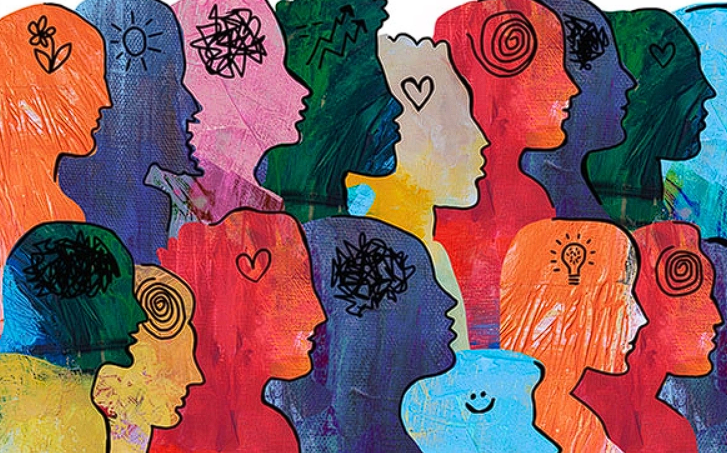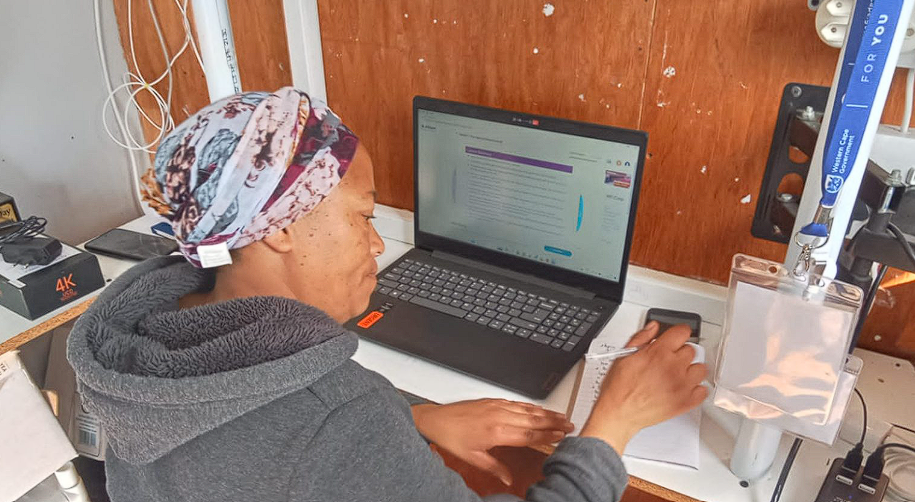Articles
Building Community-Centered AI Collaborations
-
1 week ago
AI can only boost the under-resourced nonprofit world if we design it to serve the communities we care about. But as nonprofits consider how to incorporate AI into their work, many look to expertise from tech sector, expecting tools and implementation advice as well as ethical guidance. Yet when mission-driven entities—with a strong focus on people, communities, and equity—partner solely with tech companies, they may encounter a variety of obstacles, such as:
Nonprofits that work with vulnerable populations require extra caution in implementing AI, to avoid exacerbating existing inequalities or introducing new ethical dilemmas. By collaborating with a broader set of partners—including ethicists, community groups, and academic institutions—nonprofits can better safeguard their ethical commitments.Because the challenges nonprofits face are complex, broadening partnerships to include academics, the social sciences, the policy world, and the arts, can allow nonprofits to uncover innovative ways to solve problems and leverage AI creatively. Cross-sector collaboration fosters a holistic approach to problem-solving, combining technical expertise with deep understanding of societal and community issues.For example, the HumaneAI initiative brings together nonprofits and ethical AI startups to develop privacy-first tools tailored to nonprofit needs, collaborating with data privacy advocates to ensure that organizations can harness AI while safeguarding user privacy and data security (especially in sensitive areas like mental health and human rights). Or take Climate Change AI: This environmental nonprofit leverages machine learning to tackle pressing climate challenges, fostering collaboration among climate scientists, technologists, and local community organizations, to build collective knowledge and solutions that advance conservation efforts.At the AI Equity Project, we are exploring the challenges and opportunities for nonprofits in North America to embrace AI in a way that promotes equity, aiming to reduce disparities in access while empowering organizations to foster inclusive, human-centered AI practices:
Building creative collaborations beyond tech.1. Engage with academia and think tanks. Universities and research institutions are at the forefront of studying the social, ethical, and policy implications of emerging technologies, with a level of critical thought and rigor that complements a mission-driven focus. By partnering with academic think tanks, nonprofits can tap into evidence-based research on how AI can—and should—be used responsibly, especially in areas that intersect with human rights, privacy, and social equity. For instance, academic researchers specializing in AI ethics can be invaluable partners in shaping guidelines for ethical data collection and in ensuring that AI insights respect privacy and actively mitigate bias. Academic partnerships can also offer nonprofits access to specialized knowledge and tools that are often unavailable in commercial AI offerings. For example, collaborations with institutions that focus on algorithmic fairness can help nonprofits identify and mitigate potential biases in AI models, which is especially crucial for organizations working with marginalized or vulnerable populations.2. Collaborate with Community-Based Organizations (CBOs). Effective AI implementation in nonprofit work requires more than technical proficiency: It demands a culturally sensitive, community-informed approach. Community-based organizations (CBOs) bring a deep-rooted understanding of the specific needs, challenges, and values of local populations, allowing nonprofits to design AI solutions that reflect the lived experiences of the communities they serve For instance, a nonprofit working on food insecurity might collaborate with local food banks and shelters to understand community-specific food access issues, incorporating these insights into an AI tool that forecasts demand more accurately. CBOs also bring a sense of accountability and trust to the process, and community members are more likely to trust a project when they see familiar organizations involved.CBOs can also provide continuous feedback on AI-driven programs, helping nonprofits make ongoing adjustments to improve relevance and accessibility. This feedback loop is critical to sustaining ethical AI, as it allows nonprofits to respond to evolving community needs and challenges.3. Involve artists and storytellers. Art and storytelling offer unique, human-centered perspectives on how AI can support and elevate nonprofit missions, providing a bridge between Technology and empathy. Collaborating with artists and storytellers enables nonprofits to communicate complex data in visually compelling, relatable ways, allowing stakeholders to see the real-world impact behind the numbers. For example, a nonprofit working in healthcare could partner with artists to visualize patient data in ways that highlight patient stories, helping donors and policy makers better understand the human impact of health disparities. Storytellers also play a vital role in ensuring AI is used to elevate the experiences of individuals rather than reducing them to data points.Partnerships with artists and storytellers not only bring AI insights to life but also reinforce the nonprofit’s mission, ensuring that Technology serves as a bridge to understanding and empathy rather than a barrier. In short, engaging with creative professionals can be a way for nonprofits to humanize AI, ensuring that technology supports rather than detracts from human connection.4. Collaborate with philanthropic foundations. Many foundations are not only interested in funding AI-driven social change initiatives but also serve as conveners, bringing together a diverse range of stakeholders to foster collaboration and shared learning. For nonprofits, partnering with foundations can provide both the financial resources and collaborative opportunities needed to integrate AI responsibly. Foundations can support AI projects by funding research, pilot programs, and capacity-building initiatives, ensuring that nonprofits have the resources to experiment with AI without risking financial instability. For example, the Ford Foundation has funded projects that explore the intersection of AI and social justice, helping nonprofits leverage AI to address disparities while maintaining their ethical commitments. Philanthropic foundations also act as platforms for multi-stakeholder dialogues, convening experts from Tech, academia, and the social sector to address the ethical and operational challenges of AI.Beyond funding, foundations help nonprofits access valuable insights and expertise, fostering partnerships that bridge the gaps between technology, ethics, and social impact. By collaborating with foundations, nonprofits can participate in workshops, roundtables, and other forums that allow them to engage with AI experts and refine their strategies. Foundations can also advocate for greater awareness of the challenges nonprofits face in adopting AI, helping to shape policies and standards that support equitable and responsible AI use across the sector.For nonprofits eager to adopt AI but unsure where to start, here are practical tips for building successful, community-centered collaborations:
- Limited understanding of community needs: Sector-specific knowledge is essential for aligning AI with nonprofit missions, something many tech companies lack.
- Bias in AI models: Without diverse input, AI models may exacerbate biases or misrepresent the communities that nonprofits serve.
- Resource constraints: Tech solutions often presume budgets or capacity beyond what nonprofits can bring to bear, creating a reliance on tools that fit the nonprofit context.
- What problems do we truly need AI to solve?
- Whose voices must be centered in AI decision-making?
- How do we ensure AI remains a tool for empowerment rather than control?
From a Tech-Centric Approach to Cross-Sector Collaboration
For all their expertise in building tools and infrastructure, tech companies often lack the kind of sector-specific understanding and ethical framework needed in philanthropy. When mission-driven nonprofits partner exclusively with tech firms, they risk prioritizing efficiency and data over impact, ethics, and the community's needs. Tools developed from a tech-centric approach might fail to account for bias, equity, or accessibility. AI is like a garden: Without diverse seeds (data) and thoughtful tending (collaboration), it can grow wild and unmanageable, producing results that are poorly aligned with nonprofit missions. Tech companies may lack insight into how AI can enhance—rather than diminish—the human connections central to nonprofit missions.Nonprofits that work with vulnerable populations require extra caution in implementing AI, to avoid exacerbating existing inequalities or introducing new ethical dilemmas. By collaborating with a broader set of partners—including ethicists, community groups, and academic institutions—nonprofits can better safeguard their ethical commitments.Because the challenges nonprofits face are complex, broadening partnerships to include academics, the social sciences, the policy world, and the arts, can allow nonprofits to uncover innovative ways to solve problems and leverage AI creatively. Cross-sector collaboration fosters a holistic approach to problem-solving, combining technical expertise with deep understanding of societal and community issues.For example, the HumaneAI initiative brings together nonprofits and ethical AI startups to develop privacy-first tools tailored to nonprofit needs, collaborating with data privacy advocates to ensure that organizations can harness AI while safeguarding user privacy and data security (especially in sensitive areas like mental health and human rights). Or take Climate Change AI: This environmental nonprofit leverages machine learning to tackle pressing climate challenges, fostering collaboration among climate scientists, technologists, and local community organizations, to build collective knowledge and solutions that advance conservation efforts.At the AI Equity Project, we are exploring the challenges and opportunities for nonprofits in North America to embrace AI in a way that promotes equity, aiming to reduce disparities in access while empowering organizations to foster inclusive, human-centered AI practices:
Building creative collaborations beyond tech.1. Engage with academia and think tanks. Universities and research institutions are at the forefront of studying the social, ethical, and policy implications of emerging technologies, with a level of critical thought and rigor that complements a mission-driven focus. By partnering with academic think tanks, nonprofits can tap into evidence-based research on how AI can—and should—be used responsibly, especially in areas that intersect with human rights, privacy, and social equity. For instance, academic researchers specializing in AI ethics can be invaluable partners in shaping guidelines for ethical data collection and in ensuring that AI insights respect privacy and actively mitigate bias. Academic partnerships can also offer nonprofits access to specialized knowledge and tools that are often unavailable in commercial AI offerings. For example, collaborations with institutions that focus on algorithmic fairness can help nonprofits identify and mitigate potential biases in AI models, which is especially crucial for organizations working with marginalized or vulnerable populations.2. Collaborate with Community-Based Organizations (CBOs). Effective AI implementation in nonprofit work requires more than technical proficiency: It demands a culturally sensitive, community-informed approach. Community-based organizations (CBOs) bring a deep-rooted understanding of the specific needs, challenges, and values of local populations, allowing nonprofits to design AI solutions that reflect the lived experiences of the communities they serve For instance, a nonprofit working on food insecurity might collaborate with local food banks and shelters to understand community-specific food access issues, incorporating these insights into an AI tool that forecasts demand more accurately. CBOs also bring a sense of accountability and trust to the process, and community members are more likely to trust a project when they see familiar organizations involved.CBOs can also provide continuous feedback on AI-driven programs, helping nonprofits make ongoing adjustments to improve relevance and accessibility. This feedback loop is critical to sustaining ethical AI, as it allows nonprofits to respond to evolving community needs and challenges.3. Involve artists and storytellers. Art and storytelling offer unique, human-centered perspectives on how AI can support and elevate nonprofit missions, providing a bridge between Technology and empathy. Collaborating with artists and storytellers enables nonprofits to communicate complex data in visually compelling, relatable ways, allowing stakeholders to see the real-world impact behind the numbers. For example, a nonprofit working in healthcare could partner with artists to visualize patient data in ways that highlight patient stories, helping donors and policy makers better understand the human impact of health disparities. Storytellers also play a vital role in ensuring AI is used to elevate the experiences of individuals rather than reducing them to data points.Partnerships with artists and storytellers not only bring AI insights to life but also reinforce the nonprofit’s mission, ensuring that Technology serves as a bridge to understanding and empathy rather than a barrier. In short, engaging with creative professionals can be a way for nonprofits to humanize AI, ensuring that technology supports rather than detracts from human connection.4. Collaborate with philanthropic foundations. Many foundations are not only interested in funding AI-driven social change initiatives but also serve as conveners, bringing together a diverse range of stakeholders to foster collaboration and shared learning. For nonprofits, partnering with foundations can provide both the financial resources and collaborative opportunities needed to integrate AI responsibly. Foundations can support AI projects by funding research, pilot programs, and capacity-building initiatives, ensuring that nonprofits have the resources to experiment with AI without risking financial instability. For example, the Ford Foundation has funded projects that explore the intersection of AI and social justice, helping nonprofits leverage AI to address disparities while maintaining their ethical commitments. Philanthropic foundations also act as platforms for multi-stakeholder dialogues, convening experts from Tech, academia, and the social sector to address the ethical and operational challenges of AI.Beyond funding, foundations help nonprofits access valuable insights and expertise, fostering partnerships that bridge the gaps between technology, ethics, and social impact. By collaborating with foundations, nonprofits can participate in workshops, roundtables, and other forums that allow them to engage with AI experts and refine their strategies. Foundations can also advocate for greater awareness of the challenges nonprofits face in adopting AI, helping to shape policies and standards that support equitable and responsible AI use across the sector.For nonprofits eager to adopt AI but unsure where to start, here are practical tips for building successful, community-centered collaborations:
- Build a Partnership Roadmap: Define and articulate your why and what you want from AI before seeking partners. Who should be included in this process? All the stakeholders identified help to clarify the nonprofit's goals and ethical priorities, ensuring potential collaborators understand the mission behind the technology.
- Identify Value-Driven Collaborators: Seek partners who prioritize social impact and mission alignment. Many showcase values on their website and what they look like in action. The right partners bring not only technical expertise but also a commitment to advancing equity and ethical practices.
- Establish Clear Ethical Standards: Collectively create “AI Values” (your statements of ethical commitments), ideally with input from community members, to guide AI projects. This framework should outline principles around privacy, inclusivity, and data use, helping all collaborators stay aligned.
- Balancing Timelines Across Sectors: Timelines of different entities, say academics, may differ significantly from those of nonprofits, requiring flexibility and regular communication to stay aligned. Hold space for the needs of different entities in the partnerships.
Related Articles Posts
Categories
Popular Post
-
 SA’s IT spend to outpace GDP growth 1 year ago
SA’s IT spend to outpace GDP growth 1 year ago -
 Vodacom, Netstar launch free in-taxi Wi-... 1 year ago
Vodacom, Netstar launch free in-taxi Wi-... 1 year ago -
 South Africa under pressure to fill cybe... 1 year ago
South Africa under pressure to fill cybe... 1 year ago -
 Organisations with a strong employee val... 1 year ago
Organisations with a strong employee val... 1 year ago -
 Joint policy-in-action event highlights... 1 year ago
Joint policy-in-action event highlights... 1 year ago -
 Boost your digital transformation journe... 1 year ago
Boost your digital transformation journe... 1 year ago








